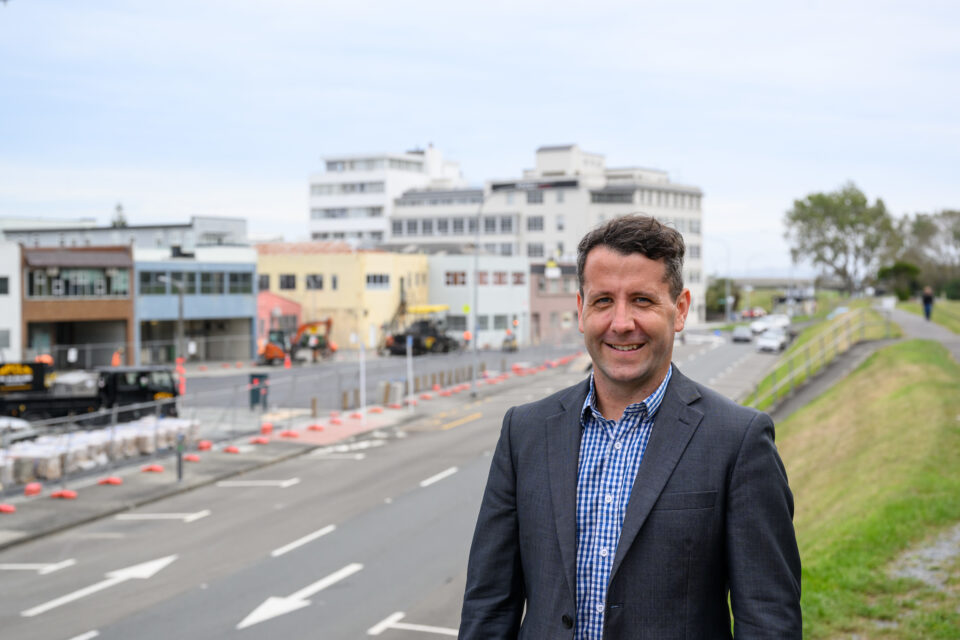Candidates in this year’s local body elections will no doubt be tempted to campaign on promises of low or even zero rate increases, given the double-digit rate rises many councils have made in recent years, writes Campbell Barry, the Mayor of Hutt City Council.
It’s understandable that such promises are appealing to ratepayers who have also had to deal with an economy weighed down by inflation and high interest rates. Any cost increase at the moment is unwelcome, particularly for those on fixed incomes.
However, the issue of rates is not as black and white as some might like to paint it.
Zero rate increases are, of course, possible but there are trade-offs with serious consequences like reduced levels of service and infrastructure delivery.
For many councils, including mine, transport and water account for 60 to 70 per cent of capital budgets. About 50 per cent of our council’s 12.6 per cent rates increase this year is for water investment alone.
So, any candidate promising a zero or very low rates increase, particularly over a sustained period, will have to dramatically slash core infrastructure investment, and reduce other important community services like pools and libraries for example.
Local government is often criticised for wasteful spending, yet a 2018 report by the New Zealand Initiative said perhaps one in every three dollars of government spending is wasteful. That represented about 13 per cent of GDP at the time, or $20,000 per household annually.
There’s actually an argument to be made that rates present pretty good value for money when you compare other household bills.
In this country, the average annual power bill is about $2400, insurance is $2700, and an internet service around $1000.
The average rates bill each year is between $3500 and $4000, which provides for a wide range of services including road maintenance, rubbish and recycling collection, Three Waters, parks, and community facilities.
However, rates are a blunt tool.
Kicking the can down the road by keeping rates artificially low is one of the reasons councils are now facing a financial sustainability problem.
This is exacerbated by successive governments underestimating the effect its policies have on rates. Councils are continuously being asked to do more with less.
For example, introducing lower speed limits on local roads (a requirement from the previous Government) cost $400,000, and this Government has forced us to reverse those changes, costing another $400,000 in Lower Hutt. The National Policy Statement on Urban Development cost us $750,000.
Local government is also not helped by the government collecting GST on rates, which is basically a tax on a tax.
Councils across the country collect about $10 billion in rates each year. If the government handed back to councils the GST it collects on rates, it would instantly equate to a $450 to $650 decrease in the average residential ratepayer’s bill.
Then there is the fact the government does not pay rates on the property it owns like schools and hospitals. It’s estimated this could bring in more than $20 million annually which would make a significant difference to our council’s balance sheet.
Central government agencies paying rates on their properties was one of many recommendations made by the wide-ranging 2023 Review into the Future of Local Government.
This review also recommended widening the toolbox of revenue streams available to local government.
Councils need flexible funding to keep delivering what communities need. These also include things like congestion charging, fuel levies, bed taxes, and value capture tools.
It has been difficult to have a broader conversation with the Government about different ways of raising revenue.
There were some good conversations with the previous Government, but these did not progress into action.
The current Government has said it will not be responding to the 2023 review’s recommendations and is instead focused on establishing a regional deals framework and unlocking new funding and financing tools.
Ministers are also considering sharing GST revenue from new housing construction with councils. This is welcome but councils urgently need more wide-reaching change.
If we are serious about localism, councils should have a range of tools to choose from in deciding how they raise revenue, and ratepayers can of course decide at the ballot box if they like the approach or not.
The reorganisation of local government also has to be part of the equation.
We know that the current structure of the local government sector means infrastructure and services are not always delivered in the most cost-effective and efficient way.
Three Waters reform has required councils to consider reorganising the way drinking, stormwater and wastewater services are delivered through the establishment of new water entities.
This could be a catalyst for a wider conversation.
Hutt City Council has considered adding a non-binding referendum question to this year’s local election ballot, asking whether the community supports exploring amalgamation.
The debate about reorganisation has been around for a while and it feels timely to put the question to residents. It will be up to the future council to consider the results after the election.
Councils can also look for efficiencies by embracing innovation like Artificial Intelligence (AI).
My council has developed an AI strategy to make some of our processes more automated, reduce mistakes, drive costs down, and boost output.
AI licenses are being rolled out to 300 staff and there’s already evidence that most people are saving between 30 minutes and an hour each day by using this technology.
This means people can spend less time on administrative tasks and focus on being strategic.
The council also has a project underway to apply AI to LIM reports which will be generated in a couple of minutes rather than taking up to ten days.
Local government needs a shake-up and it’s crucial we get it right.
Government changes around funding and financing options need to go hand in hand with councils finding efficiencies through the likes of innovation and amalgamation, otherwise we risk simply rearranging the deck chairs on the Titanic.



